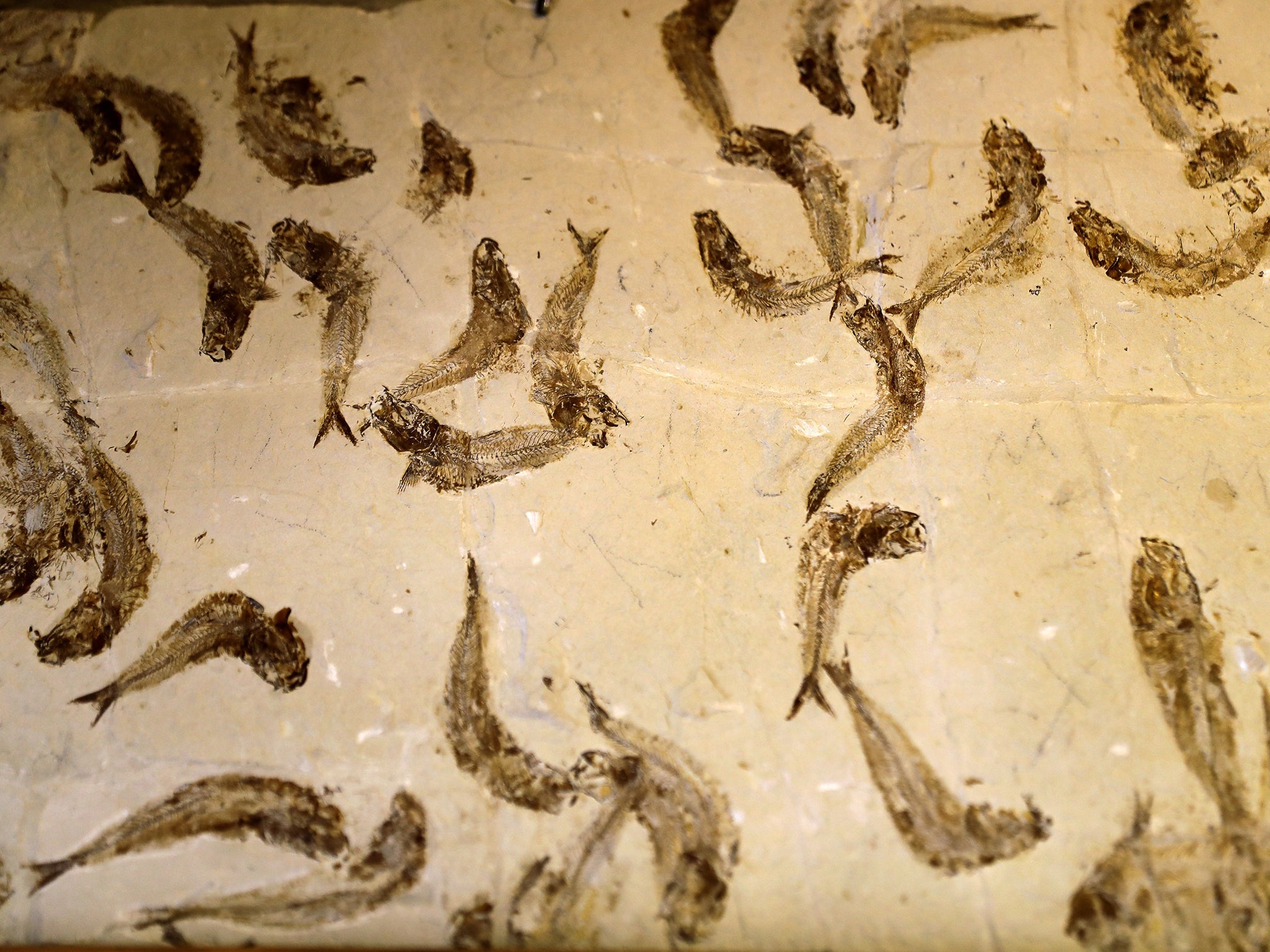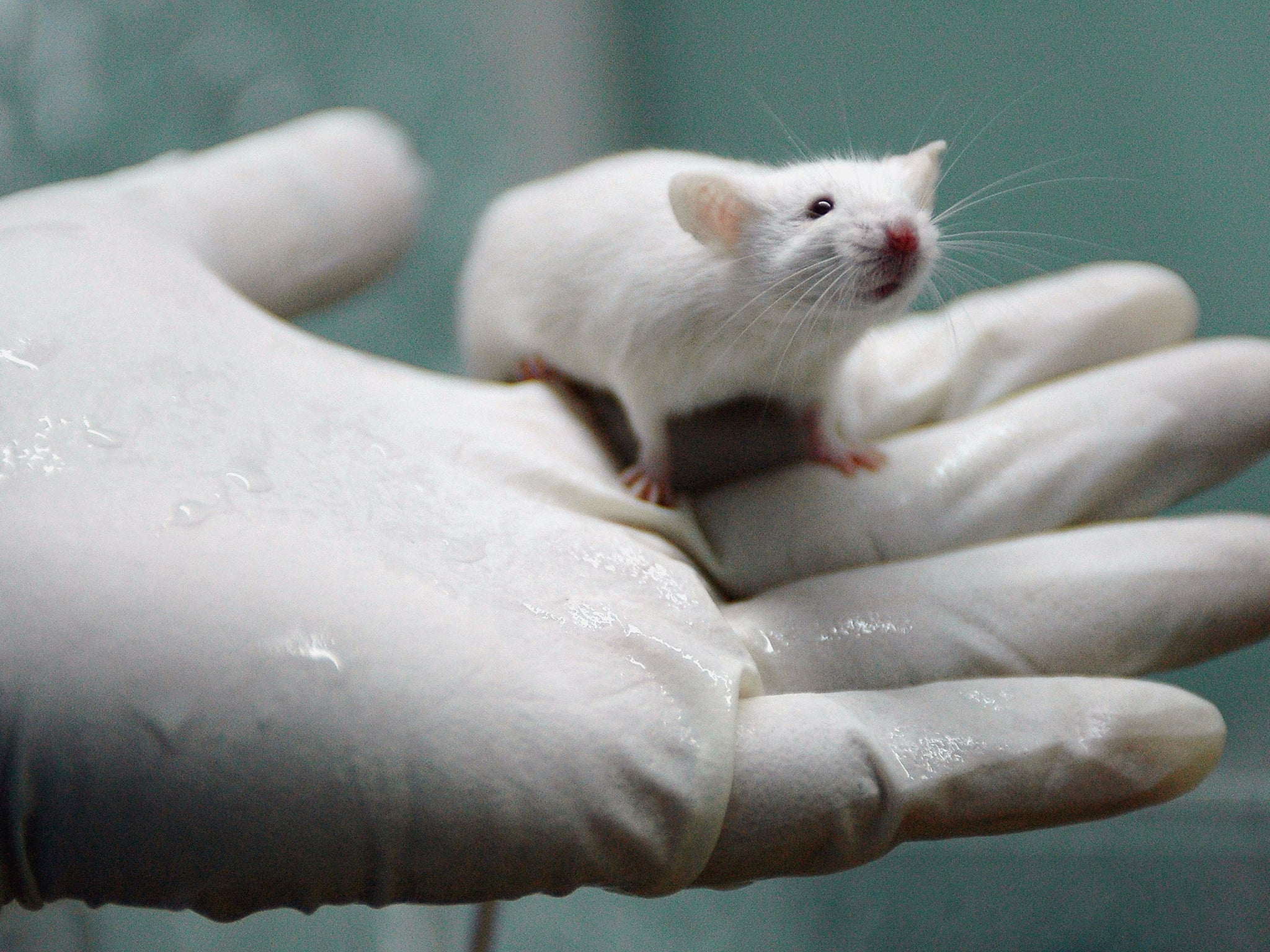Science news in brief: Why gulping a drink feels so rewarding and gauging an earthquake's power
And other news from around the world

After a long hike on a hot day, a tall, frosty glass of water is in order. The pleasure that comes with a drink might feel like a sign from your body that you’ve done the right thing, a reward for remedying your dehydration. But that sensation isn’t actually linked to your real need for a drink.
A new study in the journal Neuron on how thirst works reports that the neural systems related to the feeling of reward work independently of those involved in monitoring water intake. Mammals have multiple ways of tracking the water they’ve consumed, a subject Yuki Oka, a California neuroscientist, has long studied in mice.
Earlier research studied the gulping motion made by the throat as liquid is swallowed. That gulping tells the brain that water has been consumed, but that happens whether water or oil was consumed, suggesting that gulping only briefly convinces your brain that your thirst is quenched. The body also tracks the presence of water in the gut, and when it becomes clear that water is not arriving, thirst returns. Oka and colleagues report in their latest study that injecting water directly into the stomachs of mice did quench thirst, albeit after a longer lag.
“That gives you a sensation of satiation,” Oka says. But did satiation come with satisfaction? To test that out, the researchers gave some mice water orally and put it directly into the stomachs of others. Another batch of mice had their thirst neurons artificially manipulated to generate the sensation of quenching.
At the same time, the team watched the activity of certain neurons in the brains of the mice. These neurons’ release of dopamine, a neurotransmitter, helps to reward and reinforce the learning of positive behaviours. When mice drank water normally, a flood of dopamine resulted, suggesting the behaviour was rewarding. But when the researchers quenched the rodents’ thirst by sending water to their stomachs, or by directly manipulating their thirst neurons, nothing happened.
In a way, this parallels the experience of anyone who has had an IV in a hospital, says Vineet Augustine, a graduate student in Oka’s lab and a co-author of the paper. “You get water or saline directly infused into your body, so you probably wouldn’t feel thirsty,” he says. All your hydration needs are met. But no pleasure is involved.
“Contrast this to drinking water after a hike or something,” he continues. “If you just orally drink water, you would feel very good.” So hydration by itself isn’t rewarding. Still, that blissful feeling that comes with a cold glass of water is very real.

Hundreds of fish caught forever at beginning of schools
It’s difficult to find evidence of schooling fish in the fossil record. You need just the right circumstances to fossilise something like a school of fish in place within a rock. Then, that rock has to survive intact long enough for a palaeontologist to discover it and study it. But that is just what may have happened.
In 2016, Nobuaki Mizumoto, an Arizona State University biologist, was on vacation when he came across a slab of greyish limestone rock at the Fukui Prefectural Dinosaur Museum in Katsuyama, Japan. The slab, about 22 inches wide and 15 inches tall and estimated to be about 50 million years old, preserves what looks like a school of fish belonging to an extinct species called Erismatopterus levatus. There are 259 fish in the slab, nearly all facing the same way.
If you look closely at a modern fish school, there are a few rules that each fish follows, including attraction, whereby the fish move closer to their neighbours, and repulsion, whereby the fish increase their distance from their neighbours. Mizumoto and his team think that the fossil fish show these behaviours in action, which would reveal that fish had the know-how to form schools much earlier than previously known.
Given the direction each fish seemed to be heading as the school died, the team created a projection of what the next “snapshot” of the school would have been had it not been frozen in stone. The anticipated trajectories of the fish, Mizumoto says, could suggest a school that’s sticking together.
But does the fossil truly represent what the school looked like in life? Other scientists say more proof is required to show that the fish became buried within the space of a few seconds.“The slab surely does represent a shoal of young fishes,” says Michael Benton, a vertebrate palaeontologist at the University of Bristol. “Whether the spacing represents the original is tricky, to be sure.”

Early help assessing an earthquake’s power
The mightiest earthquakes can last minutes, making them less like a single subterranean blast and more like a series of explosions moving outward. A new study in Science Advances explains that the outward journey of these explosions differs depending on the quake’s power. That means that the final magnitude of a quake could be determined in as little as 10 to 15 seconds after it begins.
The study shows how, immediately after large quakes, they grow chaotically for a few seconds, a pandemonium that lasts longer for more prolonged quakes. The rupture then organises itself into something resembling a pulse; small increases in magnitude can make the difference between a merely damaging and a catastrophic quake. If final magnitudes could be ascertained early on, it would give more precise warnings to areas yet to be shaken.
Diego Melgar, an assistant professor of seismology at the University of Oregon, explains that this connection was not what he and the paper’s other co-author, Gavin P Hayes of the US Geological Survey, were originally looking for. Instead, they had been gathering data from quake databases to make the most accurate simulations of the most powerful quakes.
“And along the way we just stumbled upon something interesting,” Melgar says: a key moment in time that frames an earthquake’s future. The team took a close look at 3,000 earthquakes recorded by the agency’s seismometers. The data captured by these sensors can show the energy release of an earthquake over time far from the source. The researchers also dug through 30 quakes’ worth of GPS station data, where an antenna bolted to the ground tracks the development of the rupture close to the earthquake.
One limitation of the new model is that it assumes an average earthquake behaviour. In reality, “any individual earthquake still has a personality”, Melgar says. The evolution of certain earthquakes may not fit with expected patterns, making mid-rupture calculations of final magnitudes more difficult or, in some cases, easier. Melgar also acknowledges that powerful quakes, especially those above magnitude 8.5, are rarer than their weaker counterparts. More data on big temblors, from simulations or real events, is required to shore up this model.
“It’s a good speculative idea, we just need to fill it in before we can have a lot of confidence in it,” says John Vidale, a professor of seismology at the University of Southern California.

How to boil water
What’s the most efficient way to boil water? Tom Murphy, a California physicist, calculated how much of the energy of various methods went to heating the water, versus dissipating along the way. With the largest gas stovetop burner on full-blast and no lid on the pot, only about 15 per cent of the natural gas being burnt was converted to heat in the water. With a lid and a small burner, the gas stove reaches about 30 per cent efficiency. The microwave hit 43 per cent.
Most kettles locate the heating coil directly in the water and have somewhat insulated sides; they reached 70 per cent efficiency. To get the most out of your kettle, Murphy says you should only boil as much water as you need and monitor the boiling point, so you can manually shut it off.

Rats who don’t mind their wasabi extra hot
If you’ve ever taken a big bite of wasabi, you know what comes next: a painful zing that creeps over your whole scalp. You aren’t the only animal that feels this way. The condiment’s sinus-burning kick comes from AITC, a chemical compound that actively damages proteins within cells. Flies and flatworms shun it, as do mice and wolf spiders.
But there is one exception. In a new paper published in Science, scientists showed that the highveld mole rat, a rodent found in South Africa, is entirely impervious to the substance. The paper “demonstrates the power of studying naturally occurring differences in pain sensitivity”, says Ewan St John Smith, a neurobiologist not involved in the research, which could lead to better pain treatment for humans. Researchers found that neurons in the highveld mole rat are uniquely riddled with a type of ion channel called NALCN.

This channel is “leaky”, which “makes it harder to excite the neurons”, says Gary Lewin, a molecular physiologist in Berlin. The scientists didn’t originally set out to find a wasabi aficionado. They were simply hoping to compare how several mole rat species respond to things that cause pain. Years ago, Lewin and others discovered that naked mole rats – pink, bucktoothed creatures known for their uncanny longevity, insect-like social cultures and blasé attitude towards oxygen – aren’t sensitive to acid or capsaicin, the compound that gives peppers their burn.
To see whether their close relatives shared these traits, they exposed nine species of mole rat to a few pain agents. The naked mole rats didn’t react well to AITC. Neither did most of the other species the group studied, including the humans administering the trials. “When we open the Eppendorf tube with this stuff in it, most people have to leave the room,” Lewin says.
After being injected with a 0.75 per cent solution of the yellow, oily substance, seven of the other eight mole rat species licked or shook their paws in discomfort. The highvelds, though, didn’t even flinch. So the researchers upped the dose, giving them pure AITC. (The lab member in charge of these injections, Karlein Debus, had to wear a gas mask.) “They had no reaction whatsoever,” says Lewin. “That was astonishing.”
© New York Times
Join our commenting forum
Join thought-provoking conversations, follow other Independent readers and see their replies
Comments
Bookmark popover
Removed from bookmarks